_/4%20long%20arching%20exserted%20stamens%20%207-23-11%20175.jpg) The upper portion of the corolla forms a thin tube which contains the four exserted anthers and style. Baker Trail, Black Star Canyon Wilderness Park, Orange County, CA. 7-23-11. © Joan Avise |
Vinegar Weed Trichostema lanceolatum Native to western North America Grows in overgrazed and disturbed areas. Cattle are said to avoid it because of the very pungent odor. Flowers show an example of trigger pollination Back to Lamiaceae of Orange County, California |
_/note%20arching%20exserted%20stamens%207-23-11%20182.jpg) Arching exserted stamens. Baker Trail, Black Star Canyon Wilderness Park, Orange County, CA. 7-23-11. © Joan Avise |
_/flowers%20form%20in%20leaf%20axils%207-23-11%20171.jpg) Flowers form in leaf axils. Baker Trail, Black Star Canyon Wilderness Park, Orange County, CA. 7-23-11. © Joan Avise |
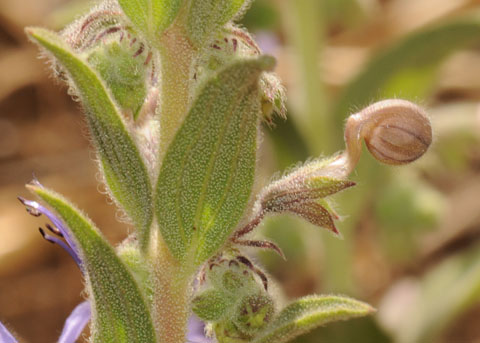 Black Star Canyon, Orange County, CA. 9-4-10. © Peter J. Bryant. |
|
| Associations with insects | |
Trigger pollination by the woodland skipper Ochlodes sylvanoides. Black Star Canyon, Orange County, CA. 9-4-10. © Peter J. Bryant. "Relationships where a flower dusts pollen onto the dorsal surface of a visiting insect are called "nototribic" and are not uncommon in other species of the genus Trichostema and other genera in the mint family". George F. Howe. Other pollinating insects include female Mason Bees Anthophora urbana, Digger Bees Melissodea stearnsi, Carpenter bees Xylocopa tabiniformes, Bumble bees Bombus sonorus, Honey bees Apis mellifera, Sweat bees Halictus tripartitus, and Leafcutter Bees Anthidium edwardsii. (Spira, 1980) |
|
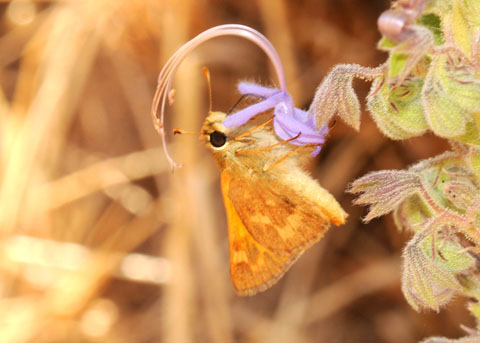 |
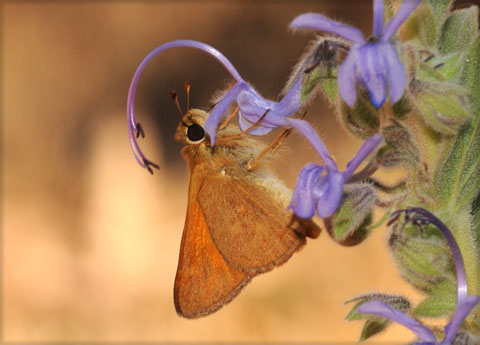 |
| "When a foraging insect alights on the lower lobes of the corolla, and inserts its mouth parts into the nectar-containing lower section of the same tube, the narrow corolla portion above is straightened and snaps rapidly downward brushing pollen onto the back of the visiting insect." See note by George F. Howe. | |
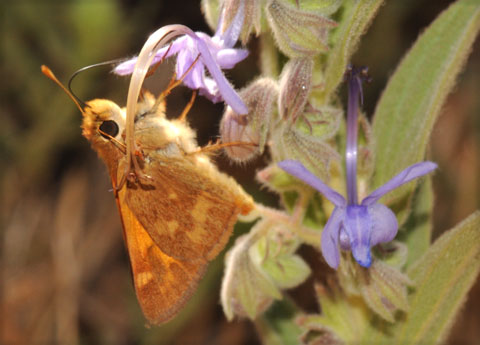 |
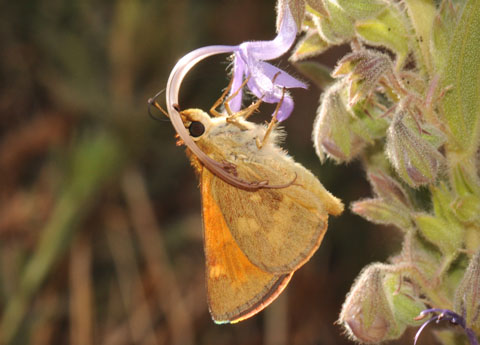 |
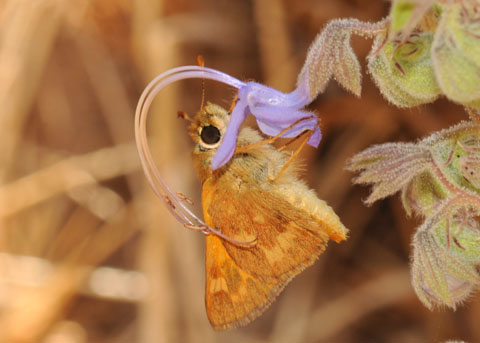 |
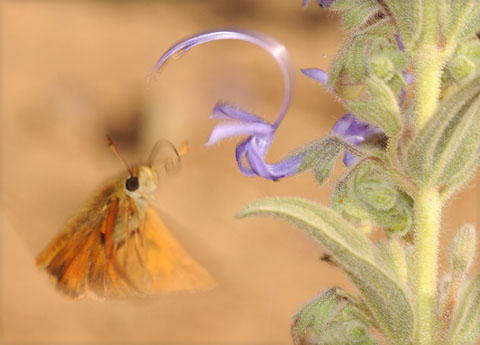 When the pollinating insect leaves, the narrow tube flips back up into its original position. |